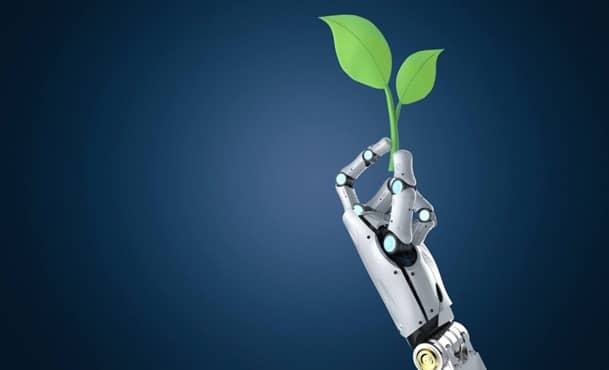A list of the top frequently asked Robotics Interview Questions and answers are given below.
1) What do you understand by the term, the robotics?
Robotics is a combined branch of engineering and science that deals with the study of the development, operation, and control of intelligent robots. Robotics is a part of Artificial intelligence. Robotics technology is used for the development of machines that can perform complex human tasks in a very efficient way.
2) What is a robot?
A robot is a programmable machine that is capable of doing complex tasks automatically with precision and efficiency. The robots can be guided by external or internal input to perform any work. A robot can be designed to resemble a human or it can be designed as a standard machine look alike.
3) What was the first industrial robot?
The first industrial robot was “Unimate.” It was manufactured by American inventor George Devol in 1950 and used in 1954. It was produced for the transportation of die casting from an assembly line and then welding on auto bodies.
4) What are the Laws of robotics?
The “Three Laws of Robotics” also known as “Asimov’s law,” was given by the author Isaac Asimov. The three laws are given below:
- First law: A robot may not injure a human being or, through inaction, allow a human being to come to harm.
- Second law: A robot must obey the orders given to it by human beings except where such orders would conflict with the First Law.
- Third law: The robot must protect its own existence as long as such protection does not conflict with the First or Second Laws.
After that Asimov also added one more law that precedes the other laws:
Zeroth law: A robot may not harm humanity, or, by inaction, allow humanity to come to harm.
5) List the names of the areas where the robotics can be applied.
Nowadays robotics can be applied to most areas to provide efficient work with the highest precision and in less time. So there is an overview of areas where robots can be applied in day-to-day life as well.
- Military Area
- Industrial Area
- Agriculture Industries
- Domestic Areas
- Medical Areas
- Researches
6) What do you understand by “humanoid robot”?
A robot that looks overall as a Human body is known as a Humanoid robot. A Humanoid robot can have human facial expressions with the features. There are two types of Humanoid robots to resemble male and female:
- Android Humanoid: They are built to resemble a male body
- Gynoids Humanoid: They are made to resemble a female body.
A humanoid robot is entirely an automatic robot that can interact with Humans and also react according to the surroundings. Sophia is the first humanoid who has also got citizenship from the country of Saudi Arabia.
7) What are the basic aspects of the robotics?
The basic aspects of the robotics to create a robot are given below:
- Electrical/electronic components- The robotics required electrical and electronic components such as power supply, sensors, microcontroller, and motor circuits.
- Mechanical equipment- Robotics required mechanical equipment to give shape or design the body of a robot
- Computer programs- The robotics also includes computer programs to provide instructions to the robot as what type of task, when it should be done, how it should be done, etc. Robo ML, ROBOFORTH, XRCL, and visual programming are the programming languages that are used in robotics.
8) What are the components of a robot?
There are the basic components of a robot which are given below:
- Power supply- Power supply is the main component for the run of any device or machine. So a robot also takes energy from the power supply to perform a task. It can be provided by batteries, hydraulic, solar power, or pneumatic power sources.
- Actuators- Actuators are the devices which convert energy into movement.
- Electric motors (DC/AC) – Motors are used to convert electrical energy into mechanical energy. Most of the robots used these motors to provide various types of movements to their parts. Brushless and brushed DC motors are used in portable robots and AC motors are used in industrial robots.
- Sensors- Sensors are used to sense the changes in surroundings and produce a signal. Hence the robots are also equipped with various types of sensors to detect the environment and respond accordingly.
- Controller- The controller is the brain of a robot, which controls and coordinates with all parts of the robot. And with the help of the controller, the robot can perform all the assigned tasks. A Microprocessor is a core part of the controller, which takes various signals as Input and generates a corresponding output signal.
9) Why do we use robots in the industry?
There are the following reasons to use the robots in industry:
- The robots are used in industry as the robots can perform a task with the highest precision and efficiency.
- The robots can be operated 24/7 for continued production.
- The robots can perform some dangerous tasks in the industry.
- The robots are cost-effective in the industry.
10) What is AI? Why do we implement AI in the robots?
Artificial intelligence is a technology that can develop intelligent devices that can react and work as a human being. AI includes:
- Speech recognition
- Learning
- Problem-solving
- Planning
Implementation of AI in the robots makes a robot intelligent which can perform a complex task, and it can sense the environment and react accordingly.
11) What are various types of sensors used in robotics?
There are the following sensors which can be used in the robotics:
- Light sensors- A light sensor detects light and creates a voltage difference, which is equivalent to the light intensity falling on the sensor.
The two main Light sensors which used in the robotics are:- Photovoltaic cells
- Photo-resistor sensor
- Sound sensors- These sensors are microphones that detect sound and return a voltage difference equivalent to the level of sound. An example of a sound sensor is: Instruct a robot by clap.
- Temperature sensor- Temperature sensors sense the change in temperature of the surroundings. It provides a voltage difference equivalent to a change in temperature occurred.
Examples of temperature sensor ICs are LM34, LM35, TMP35, TMP36, and TMP37. - Proximity sensor- The proximity sensor can sense any nearby object without any physical contact. Following are the types of proximity sensors used in robotics:
- Infrared (IR) Transceivers,
- Ultrasonic Sensor
- Photo-resistor sensor
- Acceleration Sensor- An Accelerometer is a device that detects the acceleration and can tilt accordingly.
- Navigation sensor- These are the sensors that are used to identify the position of the robot. Some of the navigation sensors are:
- GPS (global positioning system)
- Digital Magnetic compass
- Localization
12) What is a robot Locomotion?
Robot locomotion is a group of methods that a robot uses to transport itself from one place to another place. There are various types of robot locomotion, which are given below:-
- Walking
- Running
- Rolling
- Hopping
- Swimming
- Slithering
- Hybrid
13) What is an Autonomous robot?
A type of robot that can perform any task with autonomy is called an Autonomous robot. An autonomous robot can work with its own decisions without human interaction.
14) What is, “human-robot interaction”?
Human-robot interaction is a field of study that defines an interaction or communication between a robot and a Human. The “Three Laws of robotics” are given on HRI, which defines a safe interaction between a human and a robot.
15) How to send information from the robot sensors to the robot controllers?
We can send any information from the robot sensor to the robot controller through the signal.
16) What is the Pneumatic System in robotics?
A Pneumatic system is used to drive a machine by using compressed gases. In robotics, servo motors and electric motors can be replaced by a pneumatic system. A pneumatic system consists of a cylinder piston that can move up and down direction to create pressure.
17) Name the basic unit of a robot that can be programmed to give instructions to the robot.
The controller is the basic unit of a robot that can be programmed and it can give all types of instructions to perform any tasks.
18) What is the degree of freedom in robotics? How can it be determined?
The Degree of freedom in robotics defines the freedom of movement of the mechanical parts of a robot. It defines the modes by which a machine can move. The Degree of Freedom can be determined as the number of movable joints in the base, the arm, and the end effectors of the robot.
19) What is PROLOG used in Artificial intelligence?
- PROLOG is an acronym for Programming logic.
- PROLOG is a high-level programming language used primarily in Artificial intelligence, and It consists of a list of rules and fact
- PROLOG is called a declarative programming language
20) What is LISP?
- LISP stands for List programming
- LISP is mainly used for Artificial intelligence because it can process symbolic information with efficiency.
21) What are the axes of movement of the robot?
- Wrist rotation
- X-Y coordinate motion
- Elbow rotation
22) What do you understand by numerical control?
Numerical control is a process of controlling the machine with the help of a computer or sets of instructions. With the help of numerical control, we can automate the machines.
23) What is Servo controlled robot?
A servo-controlled robot is one which works on the servo mechanism. Servo-controlled robots consist of servo motors that process the signals. A servo-controlled robot can accelerate, which means these robots can change their speed at different points.
24) Name of the industry that highly used the robots?
The Automobile industry is an industry that highly uses robots for production.
25) What are actuators in the robotics?
Actuators are the electromechanical device which converts the electric energy into mechanical energy. Actuators can generate motion in each part of the robot.
26) What types of motors are used in industrial robots?
There are various types of motors available, but we can choose a motor for the robotics as per the use of an area. The motor used will depend on how and where a robot is to be used. But there are some common motors that can be used in industrial robotics:
- Servo Motors
- DC/AC motors
- Stepper Motors
- Belt drive motor
- Arm-adapted motors.
27) What is continuous path control in robotics?
When we program a robot to physically move through the trajectory or an irregular path exactly then such type of control is called as Continuous-path control in robotics.
28) If we wanted to add two numbers a and b, then how it can be written in LISP language?
If we wanted to add two numbers a and b, then it can be written as (+a b) in LISP language.
29) What is the use of the function (copy-list <list>) in LISP?
This function is used to return a copy of the defined list.
30) What is the Future of robotics?
There are the following areas where robotics can be used vastly in the future
- Robotics can be used for e-commerce
- Robotics can be raised with cloud-based software which will define new skills in the robots
- Robotics can be used more than the industries.
- Robotics can be used in the medical field
31) What are industrial robots? Explain the various types of Industrial robots.
Industrial robots are those robots that mainly work for manufacturing and production in industries. There are various types of robots that are being used in multiple areas depending on their work, and the following are the descriptions of some industrial robots:
- Cartesian: Cartesian robot applies the Cartesian coordinate system(X, Y, and Z). These types of robots have three linear joints. They also may have a wrist that can provide a rotational movement.
- Polar: The Polar robot is a type of robot that can consist of a rotatory base with an elevation pivot. The polar robot has only one arm which can perform the various task.
- SCARA: SCARA stands for “Selective Compliance Assembly Robot Arm.” Sacra robot can do three linear movements with a vertical motion. It is fixed at the Z axis and flexible in XY axes.
- Delta: These robots are the shape of a spider which has parallel arms connected to the universal joints.
- Cylindrical: A cylindrical robot has a rotatory joint for the rotational transaction and a prismatic joint for performing a linear movement.
- Articulated: Articulated robots have rotatory joints which can range from a simple two-joint structure to a complex structure with 10 or more joints.
32) What is a microcontroller? What is the use of the microcontroller in robotics?
A Microcontroller is a small programmable integrated chip that is used in the embedded system. It consists of a processor, and memory with I/O peripherals. In robotics, the microcontroller is used as the “brain” of the robot. It controls all the actions performed by the robot. It also gives instructions to a robot to perform any task.






Leave a Comment